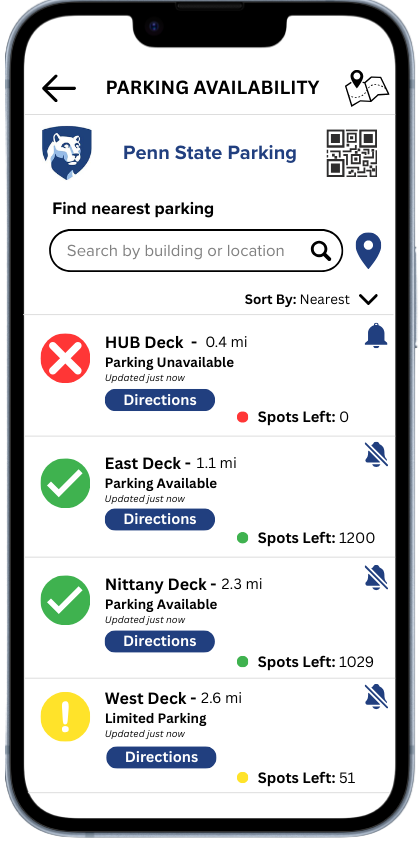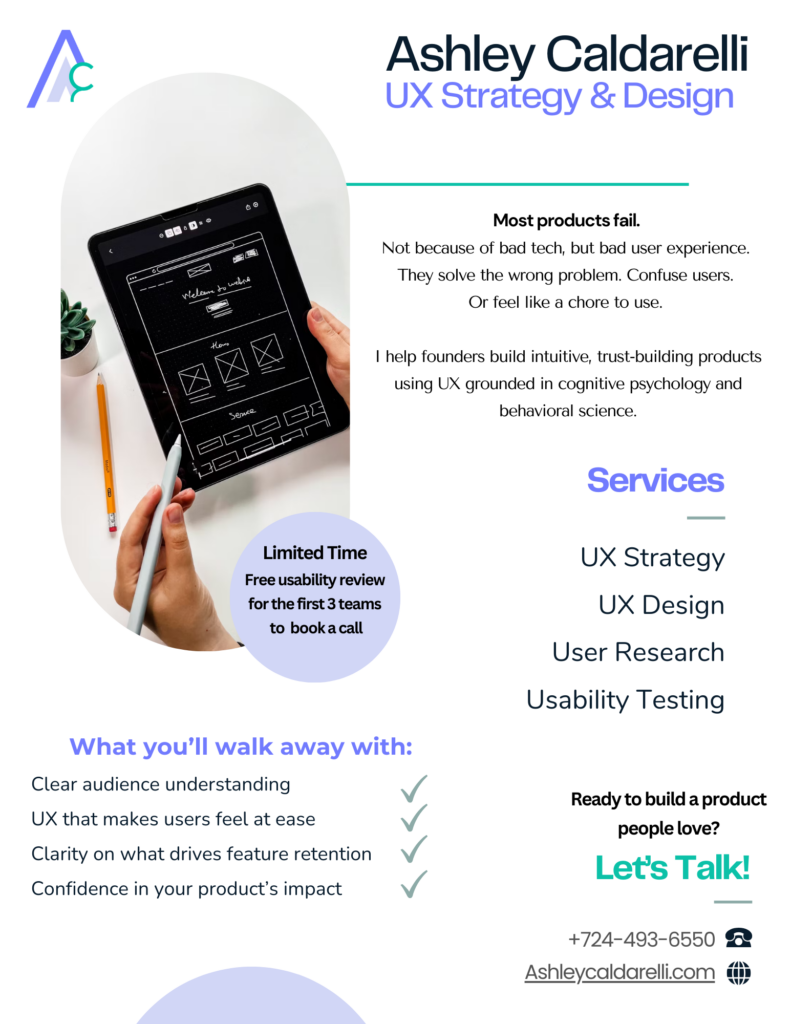Projects
Because I don’t just make things look good — I help you make better product decisions. I bring a mix of UX strategy, product thinking, and user research to help you build experiences that are thoughtful, intuitive, and aligned with real user needs. I’m not here to hand off pretty screens and disappear. I’m here to collaborate, ask the right questions, and help you build the right product — not just more features.
What I offer:
- User Research & Insight
- Product Strategy
- UX/UI Design
- UX Audits & Strategy

What Does this Mean?
User research involves gathering insights directly from users through interviews, surveys, or usability testing to understand their behaviors, needs, and pain points. Persona development distills these findings into lightweight user profiles to guide product decisions. Behavioral analysis uses data (like heatmaps, session recordings, or analytics) to identify where users struggle or drop off. Competitive analysis evaluates similar products to find UX gaps or opportunities.
Product strategy includes defining the problem, scoping the MVP, and prioritizing features based on user impact and business value. Roadmapping outlines what to build now, next, and later — and why. Stakeholder alignment ensures the team is focused on solving the right problem before investing in design or development.
UX/UI Design includes creating low- or mid-fidelity wireframes to visualize layout and flow, developing clickable prototypes in tools like Figma, and designing specific flows like onboarding or checkout. It also includes documenting design decisions, organizing files for handoff, and ensuring developers can implement the work accurately.
UX strategy focuses on mapping the user journey, designing task flows, and organizing content and features in a way that supports user goals. This includes creating wireframes, structuring page hierarchy, and defining navigation logic. Information architecture ensures users can find what they need without confusion. UX writing guidance helps clarify copy, CTAs, and overall communication.
UX audits includes heuristic UX evaluations, annotated screenshots of key issues, before/after flow comparisons, and prioritized action plans. These give clients a clear snapshot of what’s working, what’s broken, and what to do next.
Consultant Case Study


Check Out Our Newsletter!

